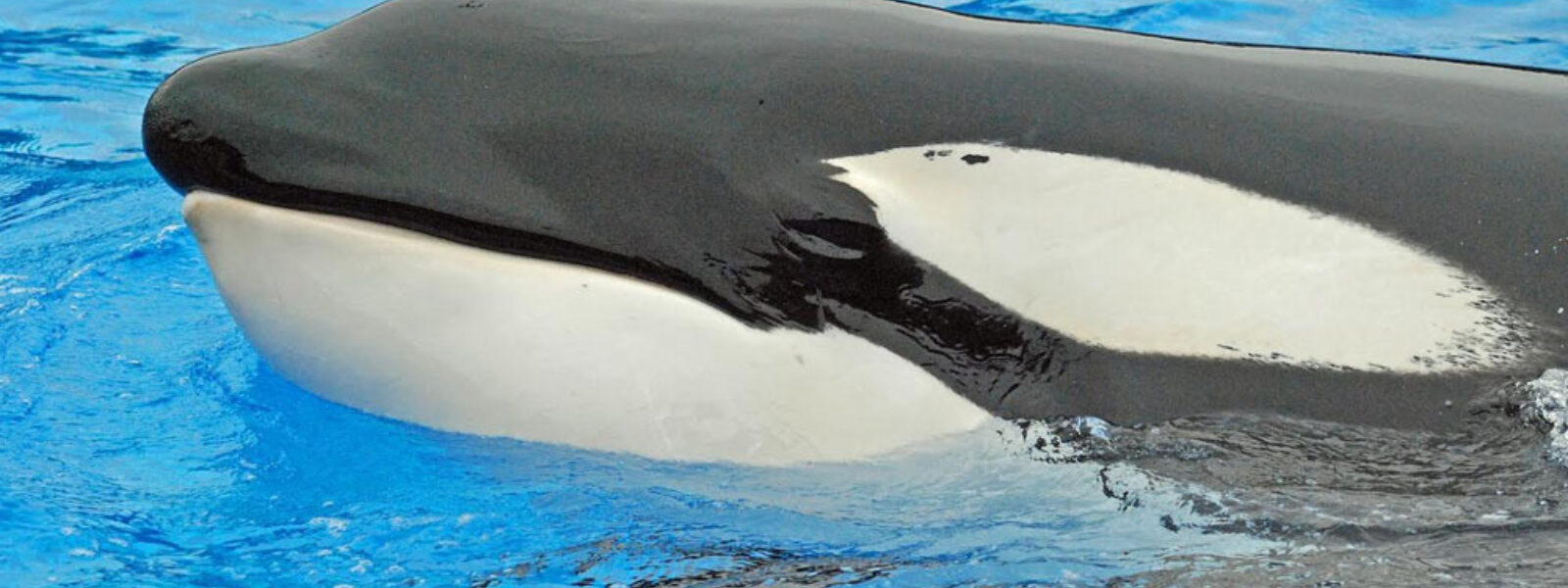
SeaWorld Orcas Continue to Die Much Too Young
By Mark J. Palmer
SeaWorld San Diego recently announced the death of yet another one of its performing orcas, this time a 20-year-old male orca named Nakai. Nakai died of an infection, a common cause of death among captive cetaceans.
It is likely that stress and boredom, two related emotional results of captivity, leads to suppression of cetaceans’ immune systems, such that orcas and other dolphins and whales die of infections, pneumonia, and other diseases caused by their confinement.
Male orcas in the wild can reach the age of 50 years, yet male orcas in captivity, like Nakai, routinely die in their 20s and 30s, much too young. Other species suffer as well.
With movies such as Free Willy and documentaries like The Cove and Blackfish, combined with educational campaigns by organizations including the International Marine Mammal Project (IMMP), the public has rallied to oppose the suffering caused by captivity. In response to shifting public attitudes and negative media coverage, SeaWorld is transitioning its focus away from performing orcas to new roller coasters and other rides.
In March 2016, SeaWorld announced a new policy: They would no longer breed orcas in captivity to produce more captive orcas. Furthermore, they pledged that they would no longer import or export captive orcas. The pledge covers all three SeaWorld parks, but arose first in California, where the California Coastal Commission imposed a ban on breeding and moving captive orcas as part of a building permit SeaWorld sought to enlarge the San Diego park’s orca tank.
When SeaWorld’s request for the building permit came before the California Coastal Commission at a heated hearing in San Diego, long-time coastal activist Sara Wan proposed the idea that the Coastal Commission condition the permit on a phase-out of orca captivity – no new orcas. The International Marine Mammal Project of Earth Island Institute helped present the idea to the Commission, and it was adopted despite fierce objections from SeaWorld representatives.
SeaWorld sued the California Coastal Commission to overturn the permit requirements, but finally settled the lawsuit (just as IMMP and other organizations were intervening in the case in support of the Coastal Commission decision) and adopted a voluntary policy of phasing out captive orcas in all three Sea World parks.
Subsequently, California legislators, supported by IMMP and other organizations, voted to enact a law prohibiting breeding and importing new captive orcas in that state. Federal legislation has been proposed to phase out orca captivity (aside from SeaWorld, the only other park in the US with a captive orca is the Miami Seaquarium) along with captivity for beluga whales, false killer whales, and pilot whales. (More on that legislation in a future blog.)

Orca teeth wear down in captivity, providing opportunities for infections in their mouths and shortening their lives. Photo Credit: Dr. Ingrid Visser, Orca Research Trust
SeaWorld San Diego is down to eight captive orcas, with the Orlando and San Antonio parks both hosting only five orcas each.
Further controversy has grown over a recent fight between orcas at SeaWorld San Diego caught on video. The fight shocked visitors, especially children in the audience, as the aggressive orcas bit each other causing blood to flow. In the wild, aggression can be eased as orcas can avoid each other – but in captivity, orcas are confined in close quarters with others that are not related, causing friction and fighting.
While it is long past time for SeaWorld and other parks to end the keeping of orcas in captivity, IMMP supports further steps for the remaining orcas. Retirement to a seaside sanctuary is a good compromise step that frees orcas from having to do “shows” and also provides much more spacious accommodations in a more natural environment for the large whales. Cetaceans in such sanctuaries would continue to be fed and receive medical care, but mostly left alone to just “be” whales and dolphins. Most of the orcas remaining in captivity in the US were born in captivity, so release of these whales back into the wild, as was done with Keiko from the Free Willy movie, who was born in the wild, is problematic.
There is an ongoing effort to return Corky, SeaWorld’s oldest captive orca at 56, to her home waters in British Columbia, starting with a sea sanctuary but eventually with hopes to release her to the wild, where her remaining family swims. SeaWorld, however, has resisted releasing any captive orcas to seaside sanctuaries.
Furthermore, SeaWorld and other aquariums continue to breed other cetacean species, especially bottlenose dolphins, which should be stopped.
Whales and dolphins are too intelligent, too dependent on social bonds that are broken by captivity, and too wide-ranging to be confined to small concrete tanks in SeaWorld and other aquariums around the world.
********************
